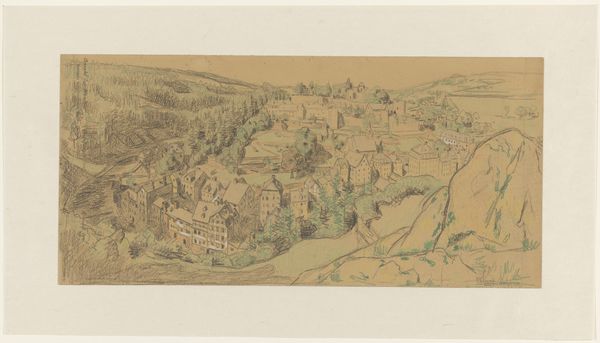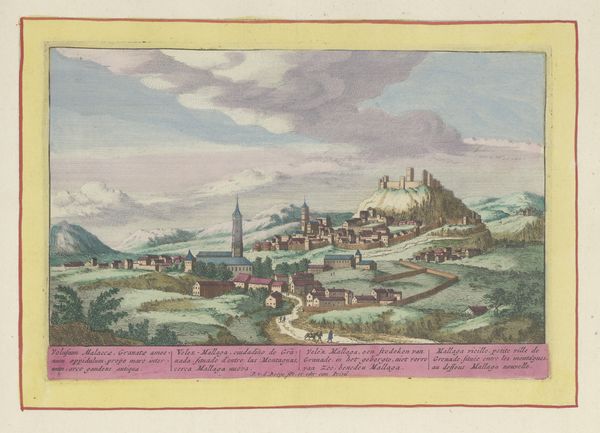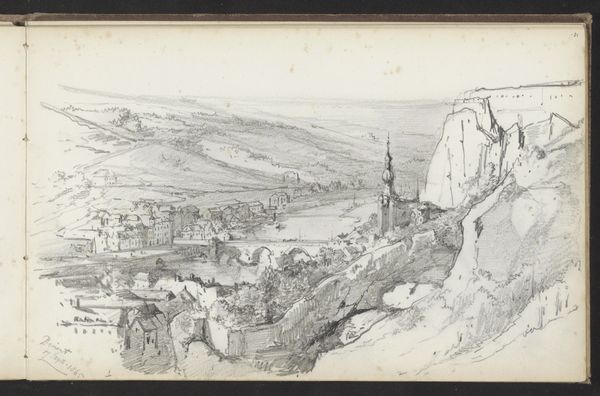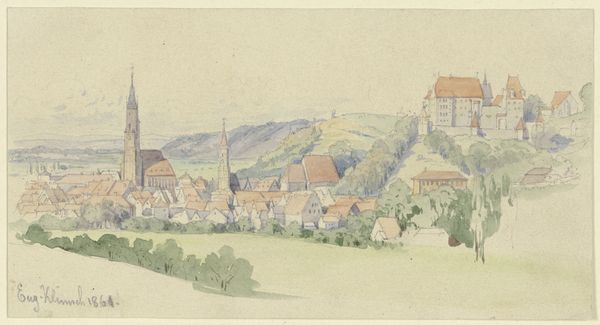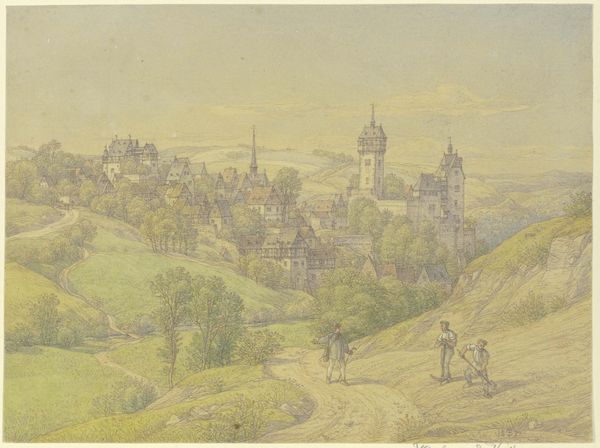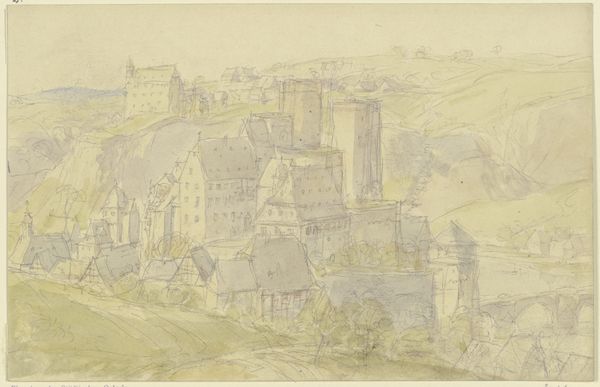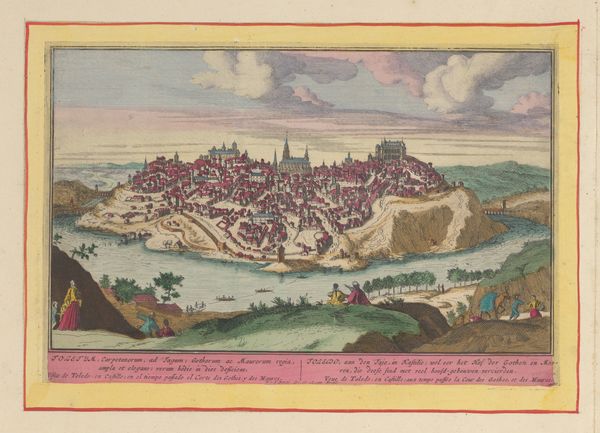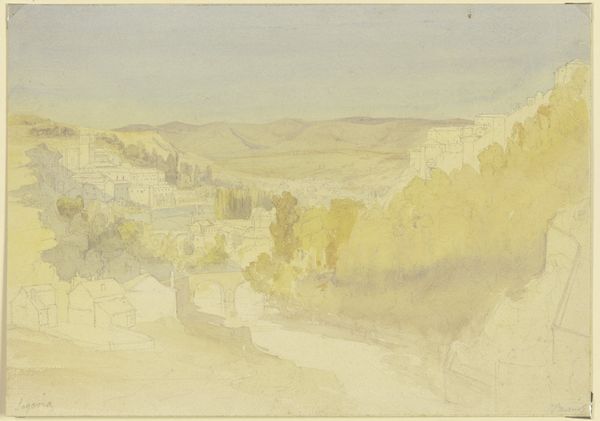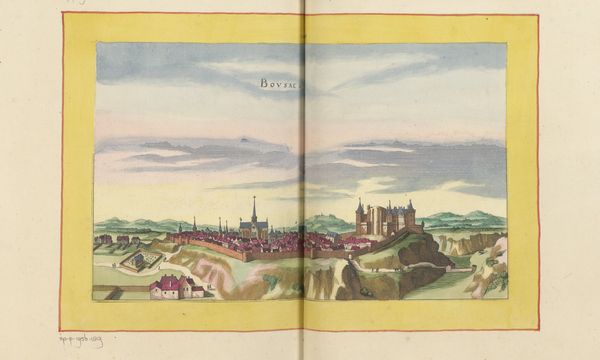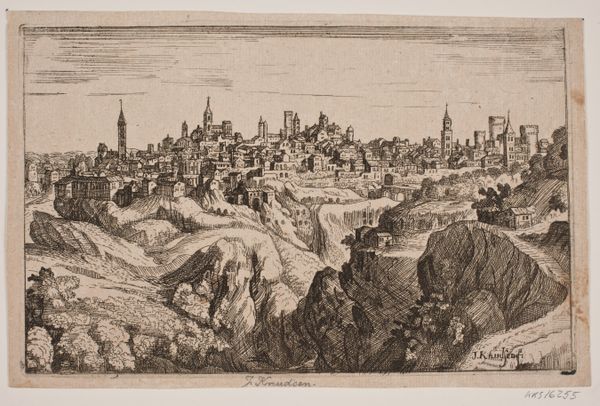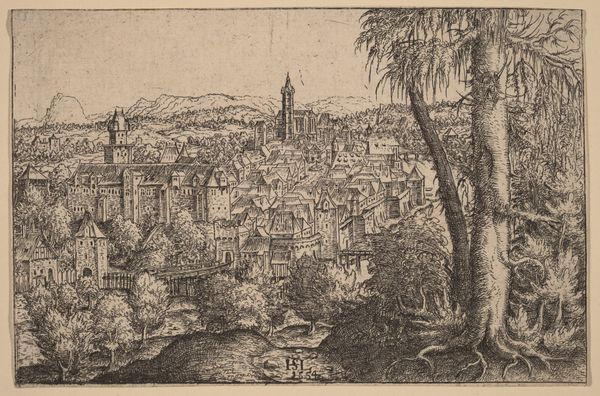
drawing, watercolor, pencil, graphite
#
drawing
#
landscape
#
perspective
#
watercolor
#
romanticism
#
pencil
#
graphite
#
cityscape
#
genre-painting
#
academic-art
Dimensions: 17 1/4 × 28 3/16 in. (43.82 × 71.6 cm)
Copyright: Public Domain
Georg Ludwig Vogel captured this view of Fribourg in a watercolor and graphite drawing. Vogel was a Swiss painter, who produced many topographical landscape images, as Switzerland navigated the shifts of power after the Napoleonic era. The image presents a distant view of the town, nestled within a valley, framed by the surrounding hills and bluffs. The vantage point is from a slightly elevated position, which invites the viewer to contemplate the picturesque arrangement of the city's architecture. Vogel's viewpoint emphasizes Fribourg’s integration with the natural environment, reflecting a Romantic sensibility. The scene evokes a sense of serene observation, characteristic of landscape paintings produced in the 19th century. Vogel’s landscapes are subtle assertions of cultural identity and belonging during an era of geopolitical transformation. The soft palette and attention to detail provide a contemplative atmosphere, inviting us to consider the relationship between place, identity, and history.
Comments
minneapolisinstituteofart almost 2 years ago
⋮
Georg Ludwig Vogel helped found the Nazarene art movement, which began as a reaction against the Vienna Art Academy. He and others had tired of formulaic training and what they saw as the superficiality of neoclassical art. In 1810 Vogel and three fellow students set off for Rome, where they lived like monks and tried to recover the profound spiritual depth they found in medieval and early Renaissance art. After a few years Vogel returned to his native Switzerland, where he focused on the country’s past glories. In this view of the ancient Swiss town of Fribourg, he concentrated on the town’s Gothic structures, ignoring the architecture that sprang up later. His use of outlines with watercolor washes and his nearly bird’s-eye view recall the landscapes of Albrecht Dürer, one of his artistic heroes, who had flourished three hundred years earlier. Though we may think of Vogel and the Nazarenes as looking backward, their rebellious attitude paved the way for revolutionary artists who would emulate their rejection of academic constraints later in the 1800s.
Join the conversation
Join millions of artists and users on Artera today and experience the ultimate creative platform.
